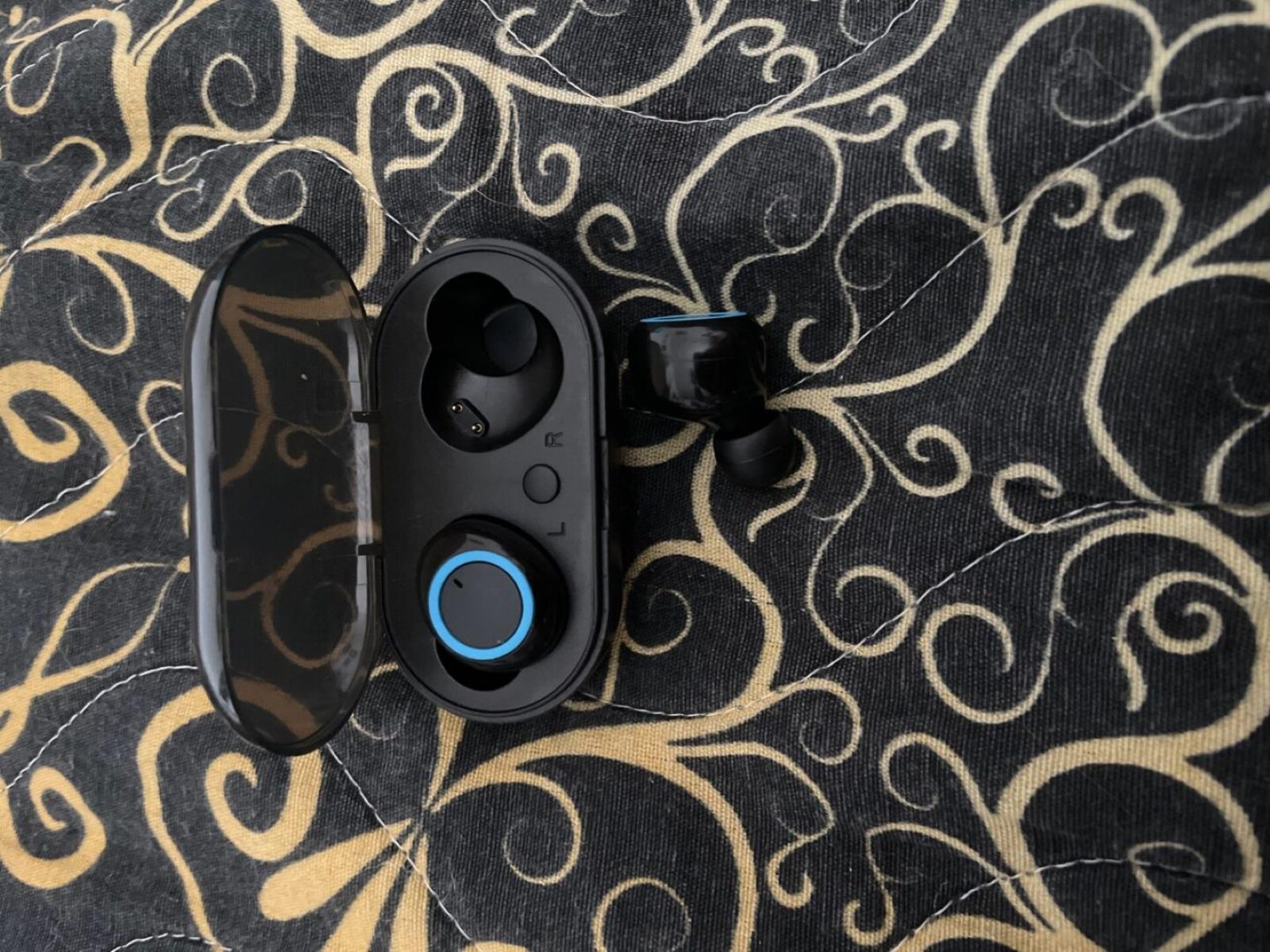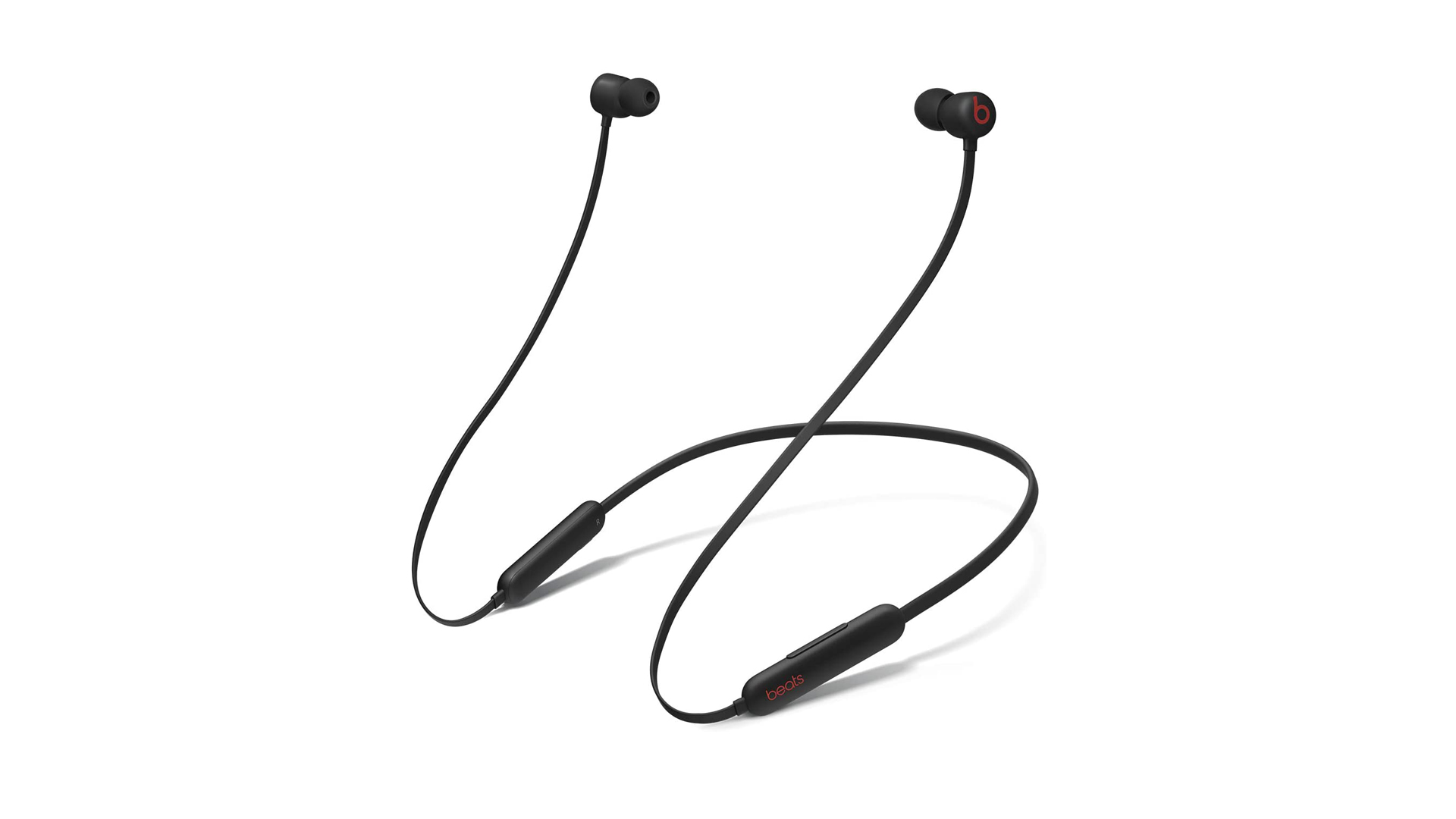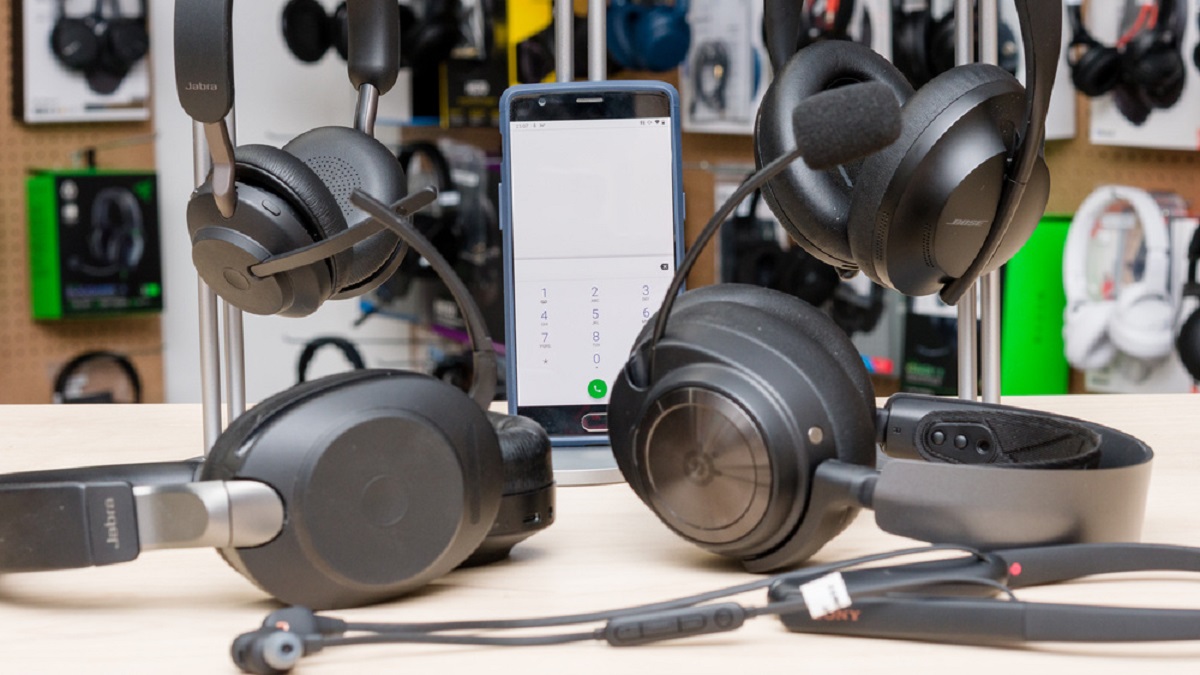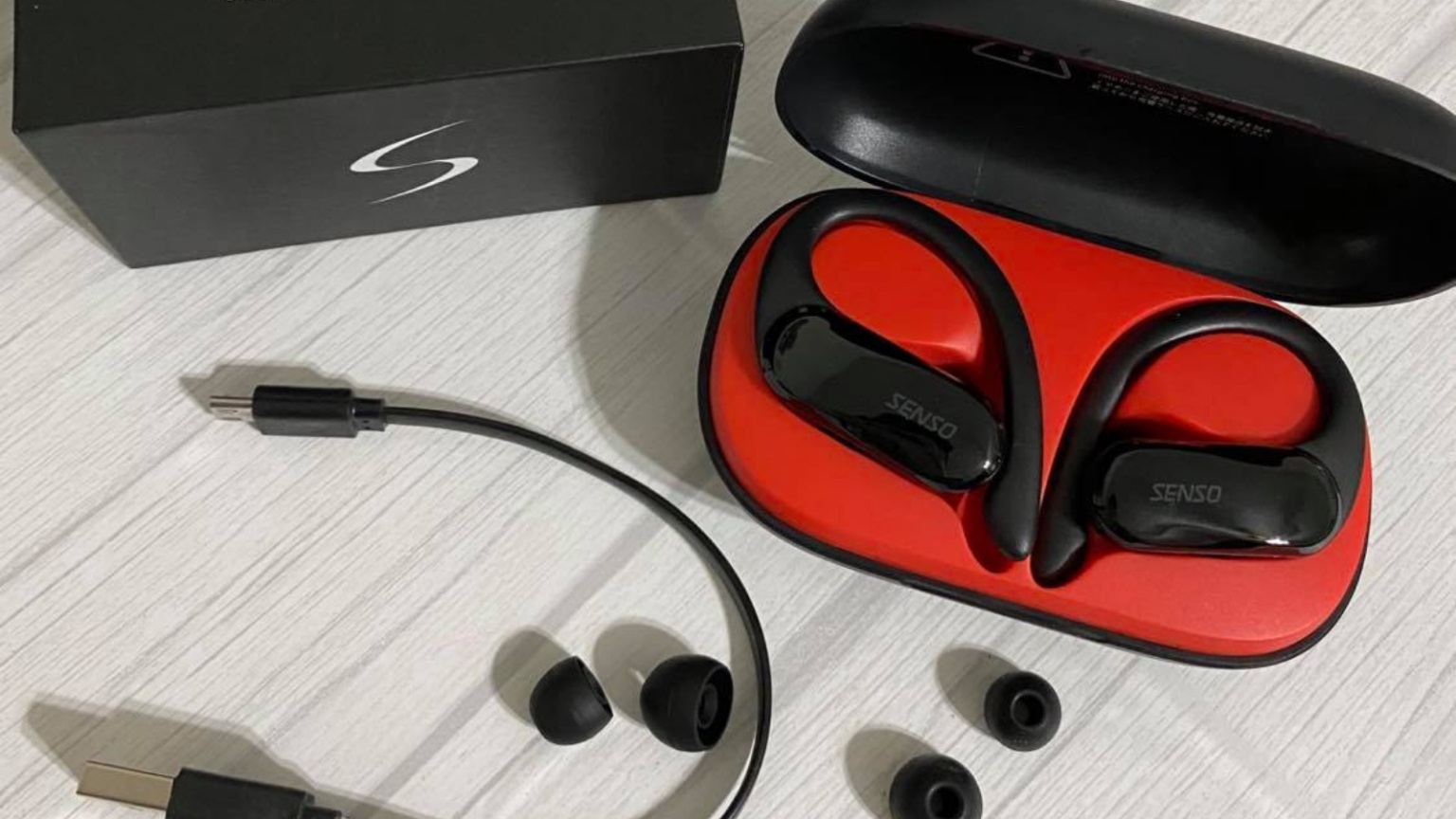Introduction
Welcome to the world of audio technology, where advancements are constantly being made to enhance our listening experiences. One such innovation is CVC noise cancellation, a feature that is gaining popularity in various devices. Whether you use earphones, headphones, or even smart speakers, CVC noise cancellation plays a crucial role in providing a clearer and more immersive audio experience.
CVC stands for Clear Voice Capture, and noise cancellation refers to the reduction or elimination of unwanted background noise. This technology is designed to isolate and filter out external sounds, allowing you to focus on the audio you want to hear without any interference. From eliminating the hum of traffic during phone calls to enjoying crystal-clear music even in noisy environments, CVC noise cancellation can significantly improve the quality of audio playback.
The increasing demand for seamless audio experiences has prompted manufacturers to incorporate CVC noise cancellation in a variety of devices. Whether you are a music enthusiast, a frequent traveler, or someone who relies on clear communication during calls or video conferences, understanding how CVC noise cancellation works and its benefits will help you make informed decisions about the devices you choose.
In this article, we will explore the inner workings of CVC noise cancellation, its benefits, and the limitations you should be aware of. We will also highlight some popular devices that feature CVC noise cancellation and provide guidance on how to enable or disable this feature. So, strap on your headphones and get ready to dive into the world of CVC noise cancellation!
What is CVC Noise Cancellation?
CVC noise cancellation is a technology designed to minimize unwanted background noise during audio playback or voice communication. It utilizes a combination of hardware and software to analyze the incoming audio signal and identify unnecessary sounds that may interfere with the desired audio content. By applying advanced algorithms, CVC noise cancellation filters out these unwanted sounds, resulting in a cleaner and more focused audio experience.
Whether you are in a bustling coffee shop, commuting on a noisy train, or simply want to enjoy your music without distractions, CVC noise cancellation comes to the rescue. It significantly reduces ambient noise, allowing you to fully immerse yourself in the audio you’re listening to. Whether it’s a phone call, video conference, or music playback, CVC noise cancellation ensures that the intended audio is delivered with clarity.
This technology is especially beneficial during phone calls or video conferences. With CVC noise cancellation, the background noise is suppressed, making it easier for both parties to hear and understand each other. It enhances the clarity of your voice while minimizing the distractions caused by external noises, ensuring that your communication remains clear and uninterrupted.
CVC noise cancellation is not limited to specific types of devices. It is commonly found in earphones, headphones, and even in-car Bluetooth systems. Whether you’re using wired or wireless audio devices, CVC noise cancellation can greatly enhance the overall audio experience. It’s worth noting that CVC noise cancellation works primarily for reducing continuous background noises, such as engine sounds or air conditioner hum, rather than sudden loud noises or human speech.
To fully understand how CVC noise cancellation works and its benefits, let’s delve into the technical aspects in the next section.
How Does CVC Noise Cancellation Work?
CVC noise cancellation employs a combination of hardware and software techniques to reduce unwanted background noise. Let’s take a closer look at the process involved:
1. Microphone Array: The device equipped with CVC noise cancellation typically has multiple microphones strategically placed. These microphones capture the surrounding audio environment, including both the desired audio and the background noise.
2. Audio Analysis: Once the microphones have captured the audio, the CVC noise cancellation system analyzes the signals. It distinguishes between the desired audio (such as your voice or the music you’re listening to) and the background noise.
3. Noise Estimation: Using advanced algorithms, the CVC noise cancellation system estimates the characteristics of the background noise. It analyzes the frequency content, amplitude, and other attributes to identify and differentiate between the desired audio and unwanted noise.
4. Noise Reduction: After estimating the background noise, the CVC noise cancellation system generates an inverse audio signal that is out of phase with the unwanted noise. This inverted signal is then mixed with the original audio signal. The result is a cancelation effect, where the unwanted noise is significantly reduced or eliminated.
5. Audio Enhancement: In addition to noise cancellation, CVC technology often includes audio enhancement algorithms. These algorithms focus on improving the quality of the desired audio by applying equalization, boosting specific frequencies, and adjusting dynamic range.
The combination of these steps ensures that the desired audio remains clear and prominent, while the background noise is effectively eliminated or reduced. This allows you to enjoy your music, have clear phone conversations, or participate in video conferences without distractions or interruptions.
It’s important to note that CVC noise cancellation works best in environments with consistent background noise, such as a humming air conditioner or road noise. Sudden loud noises or speech may not be completely eliminated by CVC noise cancellation, as the algorithms primarily target continuous noise for cancellation.
In the next section, we will explore the benefits of CVC noise cancellation and how it can enhance your audio experience.
Benefits of CVC Noise Cancellation
CVC noise cancellation offers several benefits that enhance your audio experience in various situations. Let’s explore some of the advantages:
1. Improved Audio Clarity: The primary benefit of CVC noise cancellation is the improved clarity of audio playback. By reducing or eliminating unwanted background noise, CVC noise cancellation allows you to focus on the intended audio content. Whether you’re listening to music or engaged in a phone conversation, you can enjoy clear, crisp sound without distractions.
2. Enhanced Communication: When it comes to phone calls or video conferences, CVC noise cancellation plays a vital role. By minimizing background noise, your voice becomes more prominent and intelligible to the person on the other end. This ensures that your communication remains smooth and uninterrupted, even in noisy environments.
3. Immersive Media Playback: Whether you’re watching a movie, playing a game, or simply enjoying music, CVC noise cancellation creates a more immersive experience. By reducing external disturbances, you can fully immerse yourself in the audio content and enjoy it as intended by the creators.
4. Increased Productivity: CVC noise cancellation can significantly improve productivity during work-related calls or video conferences. By minimizing background noise, you can focus better on the conversation and understand the information being conveyed. This is especially beneficial for remote workers who often have to deal with a noisy home environment.
5. Travel-Friendly: For frequent travelers, CVC noise cancellation is a game-changer. Whether you’re on a plane, train, or bus, the constant hum of engines and ambient noise can be quite distracting. CVC noise cancellation helps to significantly reduce these noises, allowing you to enjoy your audio content or have clear phone conversations while on the go.
6. Personalization Options: Some devices with CVC noise cancellation offer personalization features. You can fine-tune the audio settings, adjust the level of noise cancellation, or choose specific audio profiles to suit your preferences. This level of customization allows you to tailor the audio experience according to your liking.
CVC noise cancellation has undoubtedly revolutionized the way we experience audio. By minimizing background noise, it improves audio clarity, enhances communication, and provides a more immersive listening experience. In the following section, we will discuss the limitations of CVC noise cancellation that you should be aware of.
Limitations of CVC Noise Cancellation
While CVC noise cancellation offers numerous benefits, it is essential to be aware of its limitations. Understanding these limitations will help you manage your expectations and make informed decisions. Here are some key limitations of CVC noise cancellation:
1. Ineffectiveness Against Sudden Loud Noises: CVC noise cancellation technology primarily targets continuous and predictable background noise. It may not effectively cancel out sudden loud noises, such as loud bangs or shouts. These unexpected noises can still be heard, as the algorithms are optimized for constant noise reduction rather than handling abrupt sounds.
2. Limited Performance in Crowded or Noisy Environments: While CVC noise cancellation can reduce background noise in many environments, its effectiveness may be reduced in extremely crowded or noisy environments. In situations with multiple conversations or overlapping sounds, the technology may struggle to differentiate between the desired audio and the background noise, resulting in a lesser cancellation effect.
3. Variable Performance Across Devices: The performance of CVC noise cancellation can vary depending on the quality of the device and the implementation of the technology. While high-end audio devices often provide better noise cancellation performance, lower-cost or inferior devices may not deliver the same level of noise reduction, resulting in a compromised listening experience.
4. Impacts on Sound Quality: Although CVC noise cancellation aims to minimize background noise, it can have some impact on the overall sound quality. In certain cases, you may notice a slight degradation in audio quality, particularly in the frequency range affected by noise reduction. However, this trade-off is generally minimal and often outweighed by the benefits of reduced background noise.
5. Power Consumption and Battery Life: CVC noise cancellation technology requires additional processing power, which can impact the battery life of your devices. Constantly running the noise cancellation feature may lead to increased power consumption, reducing the overall battery life of the device. It’s important to consider this factor, especially for wireless earphones or headphones that heavily rely on battery power.
6. Device Compatibility: Not all audio devices or platforms support CVC noise cancellation. Before investing in a device with CVC noise cancellation, ensure compatibility with the apps, platforms, or devices you intend to use. Different brands may also have their own proprietary noise cancellation technologies, so it’s essential to choose devices that meet your specific requirements.
Despite these limitations, CVC noise cancellation remains a valuable feature that significantly improves audio experiences. The benefits it offers often outweigh the limitations in most everyday scenarios. In the next section, we will explore some popular devices that incorporate CVC noise cancellation.
Popular Devices with CVC Noise Cancellation
CVC noise cancellation has become a sought-after feature in a wide range of audio devices. Let’s take a look at some popular devices that incorporate this technology:
1. Apple AirPods Pro: Apple’s AirPods Pro earphones feature Active Noise Cancellation powered by CVC technology. It uses dual microphones and advanced algorithms to cancel out background noise, providing a superior listening experience.
2. Sony WH-1000XM4: Known for their exceptional noise cancellation capabilities, the Sony WH-1000XM4 wireless headphones utilize a combination of dual noise sensor technology and CVC algorithms. They offer outstanding noise cancellation performance, making them popular among audiophiles and frequent travelers.
3. Bose QuietComfort Earbuds: The Bose QuietComfort Earbuds deliver high-quality sound and effective noise cancellation. With CVC technology onboard, users can experience a peaceful and immersive audio experience, even in noisy environments.
4. Jabra Elite 85t: The Jabra Elite 85t earbuds feature powerful active noise cancellation based on CVC technology. They offer customizable noise cancellation settings and excellent sound quality, making them a great choice for those seeking a versatile audio solution.
5. Beats Studio3 Wireless Headphones: Beats Studio3 headphones combine their Pure Adaptive Noise Cancelling (ANC) technology with CVC noise cancellation algorithms. This powerhouse combination delivers a captivating audio experience by blocking out external distractions effectively.
6. Samsung Galaxy Buds Pro: The Samsung Galaxy Buds Pro earbuds feature an intelligent active noise cancellation system that incorporates CVC noise cancellation technology. Users can enjoy superior audio quality and clear calls with minimal disruptions from their surroundings.
These are just a few examples of the many audio devices available in the market today that feature CVC noise cancellation. Whether you prefer earphones, headphones, or wireless earbuds, there is likely a device that suits your needs and preferences.
In the next section, we will discuss how to enable or disable CVC noise cancellation on compatible devices.
How to Enable/Disable CVC Noise Cancellation
Enabling or disabling CVC noise cancellation can vary depending on the device or platform you are using. Here are some general steps to help you navigate the process:
- Check Device Compatibility: Ensure that your device supports CVC noise cancellation. This information can usually be found in the device’s specifications or user manual.
- Access Settings: Open the settings menu on your device. This can typically be done by tapping on the gear icon or by accessing the settings app.
- Find Sound or Audio Settings: Look for options related to sound, audio, or playback settings in the device settings menu.
- Navigate to Noise Cancellation: Once in the sound or audio settings, locate the section or submenu related to noise cancellation or audio enhancement features.
- Toggle Noise Cancellation: In the noise cancellation settings, you should find an option to enable or disable CVC noise cancellation. Toggle the switch or button to turn it on or off, according to your preference.
- Adjust Noise Cancellation Level (Optional): Depending on the device, you may have the option to adjust the level or intensity of the noise cancellation feature. This allows you to customize the amount of background noise reduction according to your preference.
- Save and Exit: Once you have enabled or disabled CVC noise cancellation and made any desired adjustments, save the settings and exit the menu.
Note that the specific steps and terminology may vary depending on the device or platform you are using. It is always recommended to refer to the device’s user manual or support documentation for detailed instructions tailored to your device.
By following these steps, you can easily enable or disable CVC noise cancellation on compatible devices and customize your audio experience as desired.
In the next section, we will wrap up our discussion on CVC noise cancellation with a summary of the key points discussed.
Conclusion
CVC noise cancellation is a remarkable technology that enhances our audio experiences by minimizing unwanted background noise. It allows us to focus on the audio we want to hear, whether it’s music, phone calls, or video conferences. By utilizing advanced algorithms and multiple microphones, CVC noise cancellation effectively filters out distractions, providing clearer and more immersive audio quality.
Throughout this article, we have explored the ins and outs of CVC noise cancellation. We learned about its functionality, how it works, and the benefits it offers. CVC noise cancellation improves audio clarity, enhances communication, provides an immersive media playback experience, increases productivity, and makes traveling more enjoyable.
It is important to be aware of the limitations of CVC noise cancellation, such as its effectiveness against sudden loud noises, variability in performance across devices, potential impact on sound quality, power consumption, and device compatibility.
Nevertheless, CVC noise cancellation continues to be a sought-after feature in many popular audio devices. Leading brands like Apple, Sony, Bose, Jabra, Beats, and Samsung incorporate CVC noise cancellation technology into their earphones, headphones, and earbuds, allowing users to experience high-quality audio with minimal interference from background noise.
To enable or disable CVC noise cancellation, refer to your device’s settings menu and navigate to the sound or audio settings. From there, you can toggle the noise cancellation feature on or off and customize the level of noise reduction, if available.
As technology continues to advance, we can expect even more refined and sophisticated iterations of noise cancellation technology. Whether it’s for personal or professional use, CVC noise cancellation undoubtedly contributes to a more immersive, productive, and enjoyable audio experience in our daily lives.
So, the next time you put on your favorite pair of earphones, headphones, or wireless earbuds, take a moment to appreciate the wonders of CVC noise cancellation and immerse yourself in the pure delight of crystal-clear audio.

























